It’s Time We Give Trees Our Attention!
After reading the article by Gabriel Popkin about tree blindness, I realized I have definitely been blind to all of the trees around me! I really love going on hikes wether that be here in Ohio, or taking unnecessarily long road trips to other states. The main thing I usually notice and the thing that excites me on hikes is the wildlife. Before we got this assignment, I took my dog on a hike and found myself actually paying attention to the various trees, flowers, and plants around me. I think it opens up a whole new world of discovery when you’re able to identify what’s around you! When I was little, I used to play this game in my backyard where I pretended to be a pioneer and could only survive off of the trees and plants I found in my backyard. This reminded me of the Popkin article when he states that way back when, being able to identify trees could be the difference between life and death! I would make “soups” and “teas” from the things in my backyard, but never actually ate or drank them…maybe now with my botanist skills I can make a concoction that hopefully won’t make me sick. I got most of my tree findings at Alum Creek State Park where I took my dog as my tree identifying partner (see cute picture of him below being an expert botanist). I am traveling to Washington state next month, and definitely plan to purchase a field guide so that I can identify and pay more attention to Washington plant species on my hikes! https://www.nytimes.com/2017/08/26/opinion/sunday/cure-yourself-of-tree-blindness.html
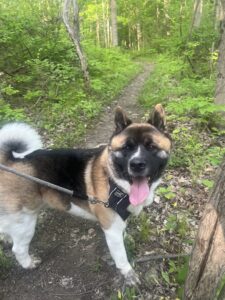
What Trees Did We See?
Who knew there were so many different types of trees around us? Usually when I look at a tree I just think “oh, another tree”, but now that I know what to look for, there is so much tree diversity all around us!
I think it’s also important to note that I saw a TON of invasive honeysuckle, but they don’t get a place here because we don’t like them.
Sugar Maple
Acer saccharum
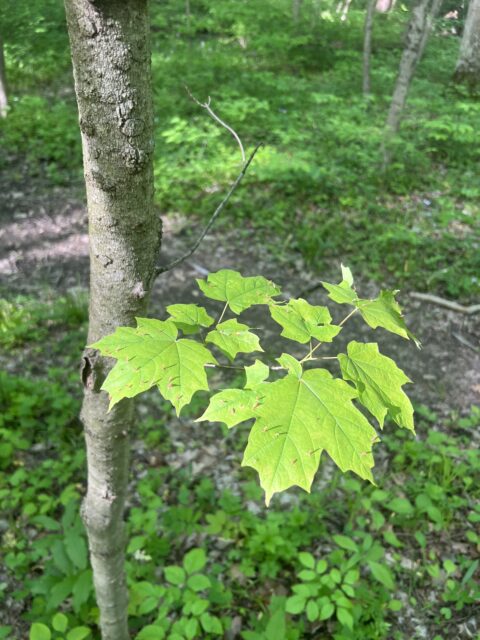
This image shows how the leaves of a sugar maple are 5-lobed, opposite, and simple! An interesting thing about this particular sugar maple is that it has galls, caused by insects either feeding or laying eggs (the little things poking off the top pf the leaf).

A fun fact about sugar maples is that they are the tree that gives us the delicious maple syrup for our waffles and pancakes! I personally love using pure maple syrup in my coffee as the sweetener! I saw this tree at Alum Creek State Park in a forest environment that is next to a large body of water. https://www.britannica.com/plant/sugar-maple
Green Ash
Fraxinus pennsylvanica var. subintegerrima
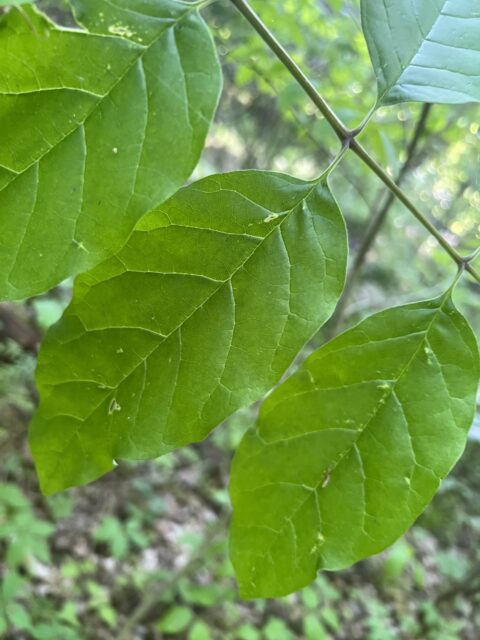 This tree and I have had some difficulties…I initially thought it was a pumpkin ash due to un-toothed leaves, but after further research I found that pumpkin ash is actually pretty rare in Ohio! After looking through the field guide a bit more, I realized that green ashes don’t always have toothed leaves, so that identification became the number one contender.
This tree and I have had some difficulties…I initially thought it was a pumpkin ash due to un-toothed leaves, but after further research I found that pumpkin ash is actually pretty rare in Ohio! After looking through the field guide a bit more, I realized that green ashes don’t always have toothed leaves, so that identification became the number one contender.

This image shows how the leaf structure is opposite, and pinnately compound which is a telltale sign of an ash tree.
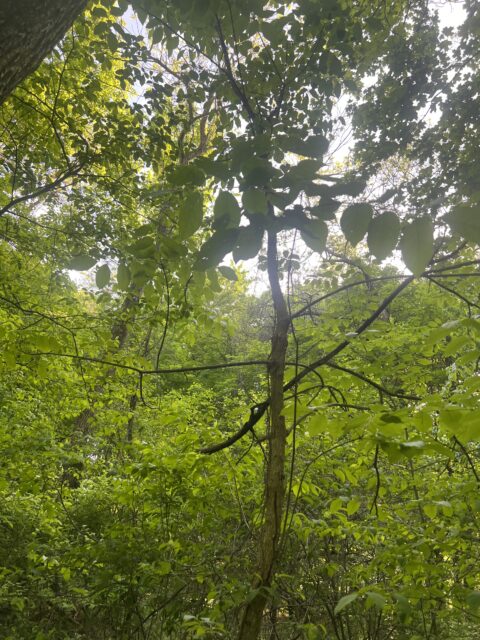
Here is the zoomed out view of the green ash! Green ash trees are dioecious, producing either male OR female flowers, not both. They also can grow more than two feet PER YEAR! https://www.weekand.com/home-garden/article/green-ash-tree-18053446.php
Honey Locust
Gleditsia triacanthos L.

This was by far the coolest tree I came across on my hike! A main feature of the honey locust are these massive thorns that are branched and each several inches long.
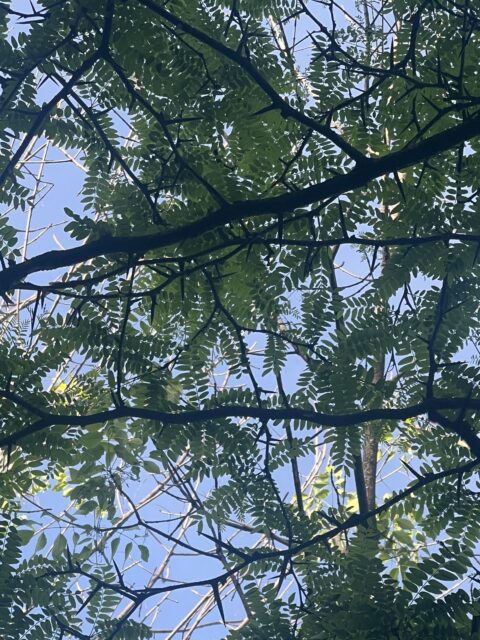
The leaves of the honey locust are equally cool because they look a lot like ferns with their feather (pinnately) compound structure. A fun fact about the honey locust is that even though they aren’t bees and don’t actually make honey, they have very sweet seeds that Native Americans would typically eat. I also saw this tree at Alum Creek State Park in the forest. https://www.adventuresci.org/visit/arboretum/honey-locust/
Tulip Tree
Liriodendron tulipifera
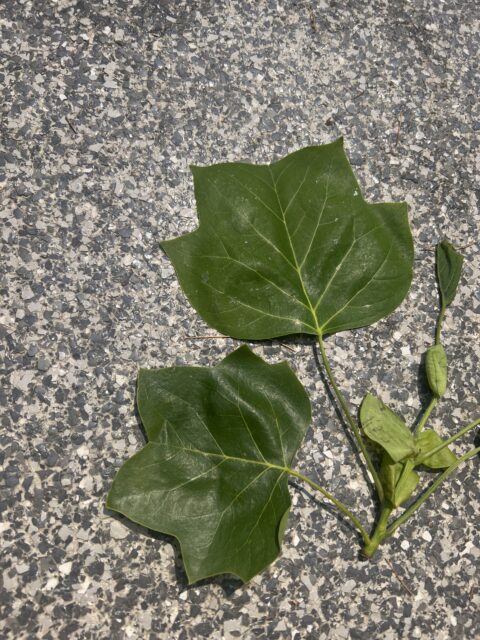
This is an image of the leaves of a tulip tree I found in my friend’s backyard. At first I was going to pass up this tree because I couldn’t get to any of the leaves, but luckily I found some perfectly in-tact ones in the grass! The structure of these leaves is alternate, simple, and fan-lobed with four points. The interesting thing about these leaves which made them easily identifiable is the way that they are notched at the tip rather than coming to a point.
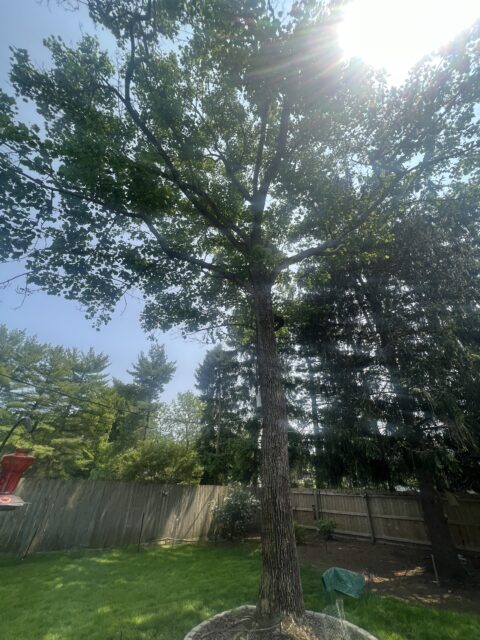
The tulip tree does not have actual tulips, but their blooms are similar in shape. Tulip trees do not bloom for their first 15 years of life! https://theparkecompany.com/fun-facts-about-the-tennessee-state-tree-the-tulip-poplar/#:~:text=The%20tree%20typically%20doesn’t,from%20100%2D150%20feet%20high.
Bitternut Hickory
Carya cordiformis
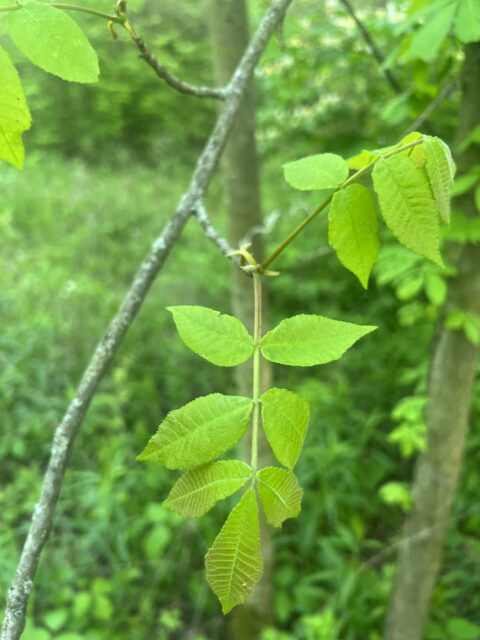
I spent a lot of time trying to identify this tree and am still not 100% certain that I’m right. The one I am sticking with is the bitternut hickory due to the alternate, pinnately compound structure. Bitternut hickories also have yellow bud scales which can slightly be seen in this image. The two trees I was between were the bitternut and pale hickory, but I chose the bitternut because pale hickories are typically found in coastal woods which definitely does not fit the description of Ohio.
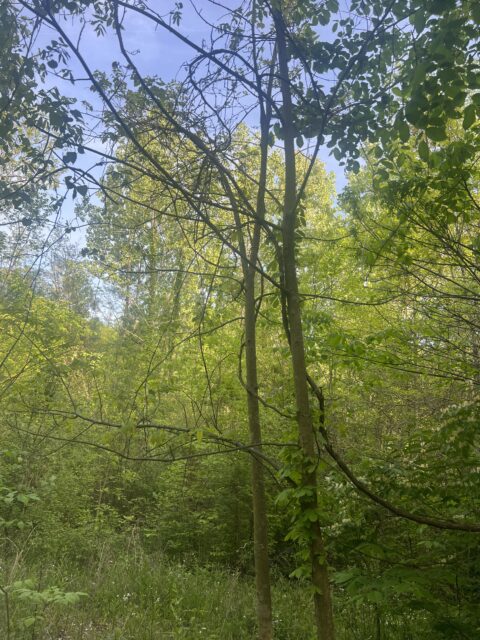
I took the photos of the hickory at Alum Creek State Park in a forest environment. Hickories are great for making bows for bow and arrows! https://www.washcoll.edu/learn-by-doing/food/plants/juglandaceae/carya.php#:~:text=Hickory%20served%20many%20craft%20uses,an%20excellent%20wood%20for%20bowmaking.
Flowering Dogwood
Cornus rugosa
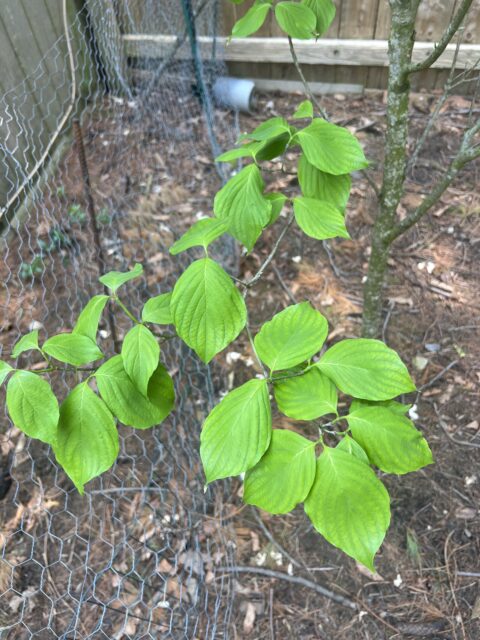
I found this flowering dogwood in my friends backyard! I identified it as a flowering dogwood because of its opposite, simple structure as well as the leaves having 5-6 vein pairs.

A fun fact about dogwoods is that they are able to self-fertilize! https://www.thetreecenter.com/dogwood-tree-information/#:~:text=Dogwood%20flowers%20are%20bisexual%2C%20so,rarely%20found%20in%20the%20USA
Gray Birch
Betula populifolia

I identified this tree as a gray birch because of its alternate and simple structure, the distinctive bark, as well as the triangular shape of the leaves. I saw this tree in the yard of a neighborhood I like to walk my dog in here in Columbus! Don’t worry I’m not a trespasser…the owners of the house were outside doing yard work and I asked if it was alright if I took some pics!
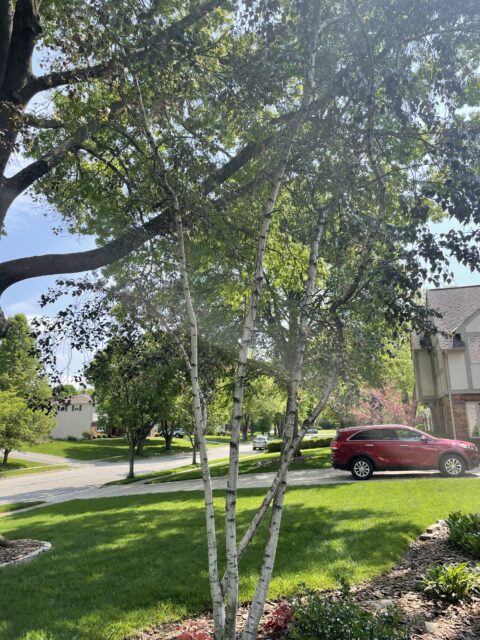
Gray birch is one of the birches whose trunk does not peel off like sheets of paper. Gray birches are considered “pioneer” species because they can grow in not the best conditions including poor soil. https://edgeofthewoodsnursery.com/species-spotlight-grey-birch#:~:text=Grey%20Birch%20needs%20full%20sun,leaves%20waver%20in%20the%20wind.
